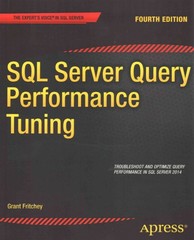Question
C Programming In this assignment we will work on the creation of a poker game. At a minimum your game must deal 2 hands of
C Programming
In this assignment we will work on the creation of a poker game. At a minimum your game must deal 2 hands of cards, and print out what poker hand each has. It must also determine which hand has won the game but breaking a tie will be for bonus points. For example, if both hands have 3 of a kind, that can be considered a tie. If you want the bonus points write some code that determines which 3 of a kind is higher.
Here is the output from dealing a hand of cards:
Ace of Hearts
Ten of Clubs
Ace of Clubs
Eight of Hearts
Seven of Diamonds
2 2 1 0 <
0 0 0 0 0 1 1 0 1 0 0 0 2
You have a PAIR!
Use lots of small functions to help reduce the complexity of the code.
You must use the code from the video to get started, and you must use the following representation for a poker hand:
make 2 arrays: suitsInHand[4], and facesInHand[14].
suitsInHand is 4 counters that represents how many hearts, clubs, diamonds, spades are in the hand. These 4 counters must add up to 5 for a hand of 5 cards. For example if you have 5 hearts in the hand of cards, the array would have the values 5,0,0,0
facesInHand is 13 counters, that represent how many twos, threes, etc. you have in the hand. This must also total 5. For example, if you have a pair of 3s, and three Kingss, this array would have the values 0,2,0,0,0,0,0,0,0,0,3,0
While dealing a hand of cards, keep a count of the suitsInHand, and facesInHand.
I will include some code below that will help you to figure out what poker hand you have dealt.
This function will use the 2 arrays described above to determine if the hand has a flush, straight, etc. I have not included the parameters. You will need to pass in the hand of cards, and have the function pass back if there is a flush, straight, three of a kind, etc.
/*
analyzeHand: Determines whether the hand contains a
straight, a flush, four-of-a-kind,
and/or a three-of-a-kind; determines the
number of pairs; stores the results into
the external variables straight, flush,
four, three, and pairs.
*/
void analyzeHand(
{
int num_consec = 0;
int rank, suit;
straight = FALSE;
flush = FALSE;
four = FALSE;
three = FALSE;
pairs = 0;
// check for flush 5 cards of the same suit
for (suit = 0; suit < SUITS; suit++)
if (suitsInHand[suit] == 5)
flush = TRUE;
// check for straight eg. One each of 5,6,7,8,9
// locate the first card
rank = 0;
while (facesInHand[rank] == 0)
rank++;
// count the consecutive non-zero faces
for (; rank < FACES && facesInHand[rank]; rank++)
num_consec++;
if (num_consec == 5) {
straight = TRUE;
return;
}
/* check for 4-of-a-kind, 3-of-a-kind, and pairs */
for (rank = 0; rank < NUM_RANKS; rank++) {
if (facesInHand[rank] == 4)
four = TRUE;
if (facesInHand[rank] == 3)
three = TRUE;
if (facesInHand[rank] == 2)
pairs++;
}
}
Here is a block of code that might help you determine what hand is better than another. These are in order. A straight-flush is the best hand, and a high-card is the worst hand.
if (straight && flush)
printf("Straight flush ");
else if (four)
printf("Four of a kind ");
else if (three && pairs == 1)
printf("Full house ");
else if (flush)
printf("Flush ");
else if (straight)
printf("Straight ");
else if (three)
printf("Three of a kind ");
else if (pairs == 2)
printf("Two pairs ");
else if (pairs == 1)
printf("Pair ");
else
printf("High card ");
Step by Step Solution
There are 3 Steps involved in it
Step: 1

Get Instant Access to Expert-Tailored Solutions
See step-by-step solutions with expert insights and AI powered tools for academic success
Step: 2

Step: 3

Ace Your Homework with AI
Get the answers you need in no time with our AI-driven, step-by-step assistance
Get Started


